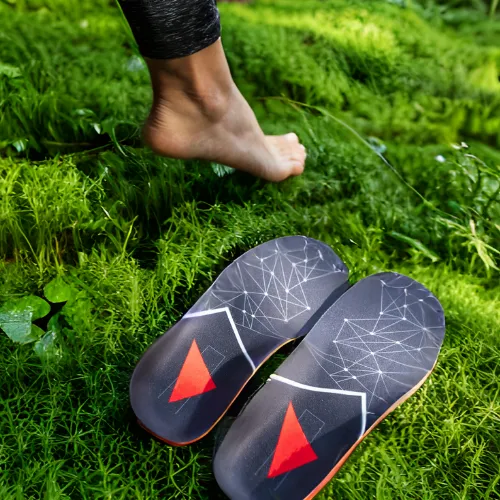Big Toe Pain | Walking on Clouds: The Complete Guide to Managing Big Toe Arthritis
Big toe arthritis, also known as hallux rigidus, significantly impacts one's quality of life.
When the big toe joint (1st metatarsophalangeal joint or 1st MTP joint ) is affected this can result in pain, stiffness, and reduced mobility.
I understand that for many individuals, this goes beyond being just a medical issue that impacts daily activities and overall well-being.
To navigate the complexities of this condition, we'll explore both non-surgical and surgical treatment options, helping you make an informed decision that aligns with your unique needs and lifestyle.
Non-Surgical Treatments: Personalised Care Plans
Non-surgical treatments are often the first line of defence against big toe arthritis.
These approaches emphasise individualised care, focusing on conservative methods that can alleviate symptoms and improve joint function without the need for invasive procedures.
Physical Therapy
Physical therapy can help maintain or improve the range of motion and strengthen the muscles around the joint. Tailored exercises can reduce stiffness and pain, enabling you to stay active and engage in daily activities with less discomfort.
Medication
Pain relievers such as NSAIDs (non-steroidal anti-inflammatory drugs) can be effective in managing pain and reducing inflammation. For some, paracetamol may suffice, while others might require stronger prescription medications.
Orthotics
Custom orthotic devices, like shoe inserts or specialised footwear, can support the affected joint, redistributing pressure and reducing pain. These are particularly beneficial for individuals who spend much time on their feet, such as teachers, builders, and athletes.

Injection Therapy
Injection therapies can offer targeted relief:
- Steroid Injections: Reduce inflammation and pain, offering temporary relief.
- Hyaluronic Acid Injections: Improve joint lubrication, mimicking the natural fluid in the joint.
- Platelet-Rich Plasma (PRP) Injections: Promote healing by using components of your own blood to trigger tissue repair.
Acupuncture
While not universally embraced, some patients find relief through acupuncture. This ancient practice may help alleviate pain and improve joint function, contributing to overall well-being.
Suitability and Benefits
Non-surgical treatments are best suited for individuals with early to moderate stages of arthritis, particularly if cartilage is still present and bone spurs have yet to develop significantly.
These methods are less invasive, have fewer risks, and allow quicker recovery times.
They are ideal for those who wish to retain as much joint motion as possible and those looking for relief to prepare for specific events, like a marathon or a golf tournament.
Surgical Options: A Path to Long-Term Relief
For those with advanced stages of big toe arthritis, where non-surgical treatments no longer provide sufficient relief, surgical options may become necessary.
The choice of surgery depends on several factors, including the extent of cartilage damage, patient activity levels, and personal preferences regarding recovery and outcomes.
Joint Preservation Techniques
- Arthroscopic or Minimally Invasive Surgery: These procedures involve shaving the bone spur to increase the range of motion and reduce pain. They are less invasive, resulting in shorter recovery times and minimal scarring.
- Cartilage Graft: For discrete focal lesions, surgeons can use your own tissues or donor tissue (human, porcine or bovine) to repair damaged areas, aiming to preserve as much of the natural joint as possible.
Joint Replacement
Joint replacement involves replacing the damaged joint surfaces with prosthetic components.
This option suits those seeking significant pain relief and improved joint function. Recovery time can vary, but many patients experience a substantial improvement in their quality of life post-surgery.
Joint Fusion
Joint fusion involves fusing the bones of the joint together, eliminating motion and, consequently, pain.
While this procedure results in a loss of movement in the big toe, it can provide long-term relief for those with severe arthritis.
It's a more definitive solution, with recovery requiring several months and is often used for revision procedures.
Risks and Considerations
Surgical interventions carry risks, including infection, transfer metatarsalgia (pain in the ball of the foot), and alteration of gait.
There is also the potential for persistent discomfort and progression of arthritis in adjacent joints.
Recovery times vary, and the ability to revise to more invasive procedures if symptoms return is an important consideration.
Decision Matrix: Tailoring Treatment to Individual Needs
To help you decide which treatment path aligns best with your needs, consider the following factors:
Factor | Non-Surgical | Surgical |
Stage of Disease | Early to Moderate | Moderate to Advanced |
Cartilage Presence | Present | Limited or Absent |
Major Issues | Pain, Stiffness, Some Motion | Severe Pain, Rigidity, Limited Motion |
Activity Level | High (e.g., athletes) | Variable |
Retention of Motion | High Priority | Flexible (Replacement) or Not (Fusion) |
Recovery Time | Shorter | Longer |
Ability to Revise | Easier | Complex, but possible |
Potential Complications | Low | Higher |
Specific Events | Preparation for Events | Long-Term Relief |
In Summary
Choosing The Right Path
Choosing between non-surgical and surgical treatments for big toe arthritis depends on your specific circumstances, preferences, and expectations.
Non-surgical options provide a less invasive approach with quicker recovery times, ideal for those in the early stages of arthritis.
In contrast, surgical options may offer more definitive solutions for advanced arthritis, albeit with longer recovery periods and higher risks.
As you navigate this journey, remember that your well-being is paramount.
At Foot-Doctor, we will discuss your symptoms, goals, and lifestyle to create a personalised treatment plan that best suits your needs.
By taking proactive steps and making informed decisions, you can manage your big toe arthritis effectively and enjoy a better quality of life.
Your path to relief and improved well-being starts with understanding your options and making choices that align with your unique needs.
To learn more about how Foot-Doctor can help, click below to take your assessment.
